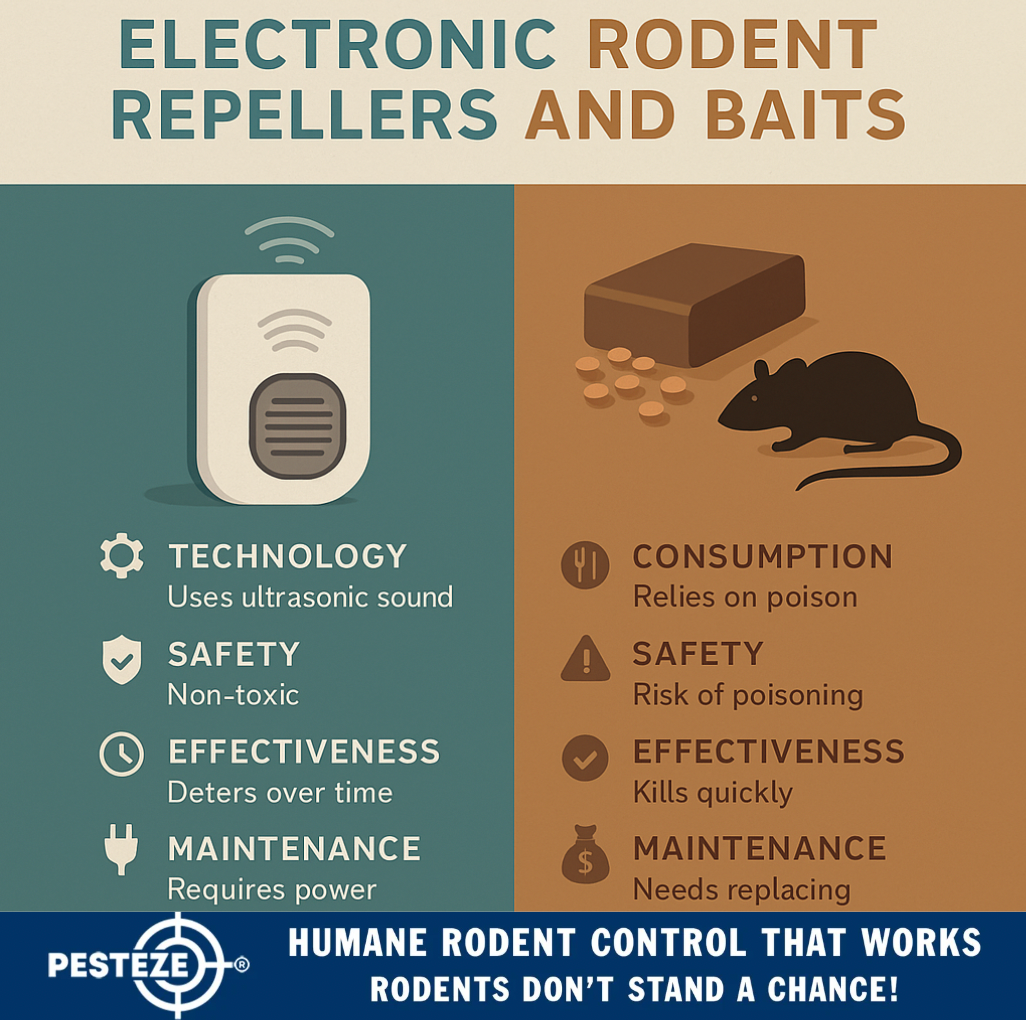COMPARING ELECTRONIC RODENT REPELLERS AND BAITS

COMPARING ELECTRONIC RODENT REPELLERS AND BAITS
SUMMARY
Electronic repellers and bait traps are two popular rodent control tools, but they work very differently. This guide compares their effectiveness, safety, and long-term impact to help you choose the right solution.
FEATURES
-
Technology vs. Consumption: Repellers use sound, baits rely on ingestion.
-
Safety: Repellers are safer for families and pets than toxic baits.
-
Effectiveness: Baits kill quickly, while repellers deter over time.
-
Maintenance: Repellers require power, baits require replacement.
-
Cost Comparison: Long-term affordability varies by method.
-
Best Environments: Which option works better indoors or outdoors.
DESCRIPTION
Rodent infestations can be managed in different ways, with electronic repellers and bait traps among the most common tools. Both have their advantages, but their methods and outcomes differ significantly, making it important to understand which works best for your needs.
Electronic rodent repellers use ultrasonic sound waves to create an environment that rodents find uncomfortable. These devices are chemical-free, safe for families and pets, and easy to install. They work best indoors in smaller, controlled spaces like bedrooms, kitchens, or offices. However, their effectiveness can vary depending on placement, obstacles, and the adaptability of rodents, who may become used to the sounds over time.
Baits, on the other hand, are designed to attract rodents with food laced with poison. Once consumed, the poison eliminates the rodent, often within a few days. Baits are effective for larger infestations and can target entire populations quickly. The downsides include safety risks for children, pets, and wildlife, along with the problem of rodents dying in hidden areas, leading to odor and sanitation issues.
From a maintenance perspective, repellers require continuous power but little monitoring, while baits must be replaced frequently and checked to ensure effectiveness. Repellers are typically a one-time purchase, making them cost-effective over time, while bait systems may involve recurring costs.
The choice between repellers and baits also depends on the environment. Repellers are ideal for indoor prevention and safe households, while baits may be more effective in outdoor or large-scale infestations where quick elimination is necessary.
Ultimately, repellers provide a safer, preventative approach, while baits deliver faster but riskier results. Many homeowners combine the two, using repellers indoors for prevention and baits outdoors for population control.
- Saharsh Bansal


Comments 0